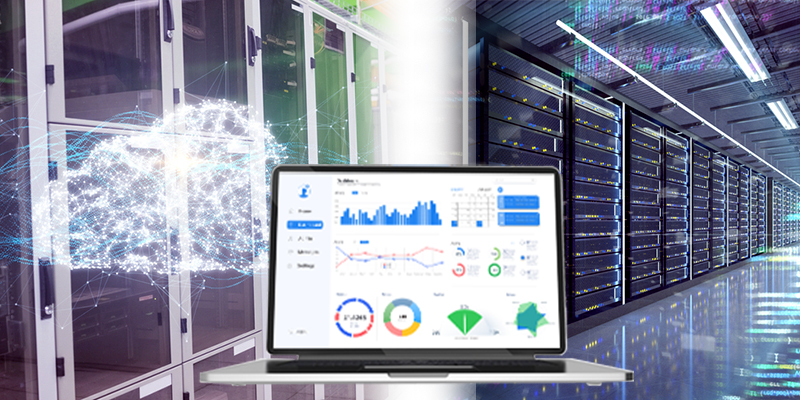In today’s Enterprise IT world, choosing the correct business server can be a daunting task – is it better to go with a cloud-based or on-premise server?
When it comes to IT infrastructure, the phrase “one size fits all” does not apply. IT priorities are entirely determined by what is essential to your business.
For example, solutions produced by gym software companies would be entirely different from the solutions used for corporate offices and manufacturing plants. This is why it’s important to find a solution that’s made specifically for your business or industry.
As you set up your IT infrastructure, you will face many decisions that will lay the groundwork for your company’s IT infrastructure.
Before discussing the best server type for your business, let’s first define what a server is.
A server is essentially a type of computer or device that allows data transformation. It sends the data that your computer requests.
Now that we’ve defined what a server is let’s figuring out which one is best for your business.
Traditionally, the software has been purchased and used via an on-premise server.
You must pay the total cost upfront, obtain a licensed product, and have your IT Managed Services Provider install and manage the product on your server.
When you use on-premise infrastructure, you can own and manage your physical computer server or servers and perform all backups and software upgrades.
Additionally, costs are associated with the server’s housing, such as cooling, electricity, and warranties. Online and remote users can connect to an on-premise server.
A cloud-based server is a more modern and trendy approach. A business charges a subscription fee for access to software online via a cloud services provider’s server.
On-Premise Vs Cloud
On-Premise
On the other hand, on-premise software typically prices on a perpetual license basis. Additionally, the company is responsible for training, support, and updates and bears the associated costs. On the other hand, on-premise applications presume to be more dependable and secure; they also provide complete ownership and control.
Cloud
For smaller businesses, the cloud is highly beneficial because it enables full functionality at a low cost due to the absence of an upfront investment. Plus, cloud software is typically available via a monthly or annual subscription model that includes training, support, and updates. A suitable cloud provider would provide increased scalability and agility. Thus, cloud computing offers increased flexibility, time savings, and financial savings.
Key differences between on-premise and cloud
Some businesses continue to prefer on-premise solutions over cloud-based services.
Both systems have their benefits and limitations, but only after careful consideration can you determine which solution is the most suitable fit for your business.
The following are some critical factors to consider when deciding between on-premises and cloud-based solutions:
Cost
The critical difference between on-premise and cloud computing also explains why their pricing models are so different.
The client utilizes an in-house dedicated server on-premise.
As a result, acquiring them requires a significant upfront investment in servers, software licensing, and the hiring of a maintenance team.
Additionally, on-premises infrastructure is less adaptable to resource scaling. Unnecessary operating costs result from not utilizing the full potential of the setup.
Cloud computing is relatively inexpensive to implement. The provider owns the infrastructure, while the client is only charged monthly or annual for the use of the devices.
This refers to the pay-as-you-go model, in which you pay only for the units and time consumed. Additionally, cloud computing eliminates the need for in-house technical staff.
Providers are responsible for maintenance unless otherwise agreed.
Technical Involvement
Another critical factor influencing an organization’s decision is the level of technical expertise required.
On-premise infrastructure requires on-site physical resources as well as on-site staff to manage it.
It necessitates a team of experts who are fully involved in the technical configuration and maintenance of servers.
Employing individuals dedicated to ensuring the security and efficiency of your infrastructure is extremely expensive.
Typically, cloud providers manage the entire solution. They require the client to possess a minimum level of technical expertise.
However, service providers grant some latitude in this area. By outsourcing maintenance, you can concentrate on other aspects of your business.
However, not all companies are willing to share their infrastructure or data.
Scalability
Due to increasing demand and user requirements, modern applications are constantly evolving.
Flexible and scalable infrastructure is required to ensure that the user experience is not compromised.
Since physical servers use, on-premise offers limited flexibility in this regard.
If your operations conduct on-site, resource scaling requires the purchase and deployment of new servers. Scaling is possible in a limited number of situations.
Several of these include limiting the number of active processors per server, increasing memory, and expanding bandwidth.
Scalability is a significant benefit of cloud computing.
These include resource sizing for servers, bandwidth, and internet usage. Cloud servers are scaled back or shut down during periods of low use to save money.
This adaptability enables the virtual location and resources of the servers, which can be easily increased or decreased. Cloud resources manage via a web-based administration panel or an application programming interface (API).
Security and Compliance
Both on-premises and cloud computing rely heavily on compliance and security. It is the primary impediment to the adoption of these services.
Current providers have made numerous advancements in securing their platforms, both on-premise and in the cloud.
For instance, the introduction of the Private Cloud was a critical step toward enhancing Cloud security.
Owners of in-house infrastructure are responsible for all security measures. They are accountable for the security policies they adopt and the security measures they implement.
As a result, the level of security is contingent upon the staff’s knowledge responsible for managing the servers. Additionally, there is less chance of data loss.
With Cloud computing workloads, security becomes even more critical.
Client applications and data can distribute across a large number of servers or even entire data centres.
Cloud security, including physical security, is ensured by the provider.
Providers should implement security measures such as biometric access control, strict visitor policies, client screening, and video surveillance. These add a layer of defence in the event of a physical attack.
Certain countries and industries necessitate the storage of data within a specific geographical region.
Others require a client-owned dedicated server that shares with other organizations. In these instances, on-premise becomes more manageable.
Control
Another deciding factor is the level of control required for system configuration.
On-premises deployment enables complete control over the build process – which servers to use, which software to install, and how the architecture configures. It takes longer to set up because every aspect of the build must consider.
In comparison, with Cloud computing, the underlying infrastructure is less controlled. As a result of the infrastructure delivered pre-configured, implementation is significantly faster and simpler.
Conclusion
Now that you’re aware of the significant differences and advantages between the servers, it’s time to decide which one best satisfies your business’s needs.
Finally, your choice should be driven by what is best for your business, considering your budget, internal resources, and future growth plans.


